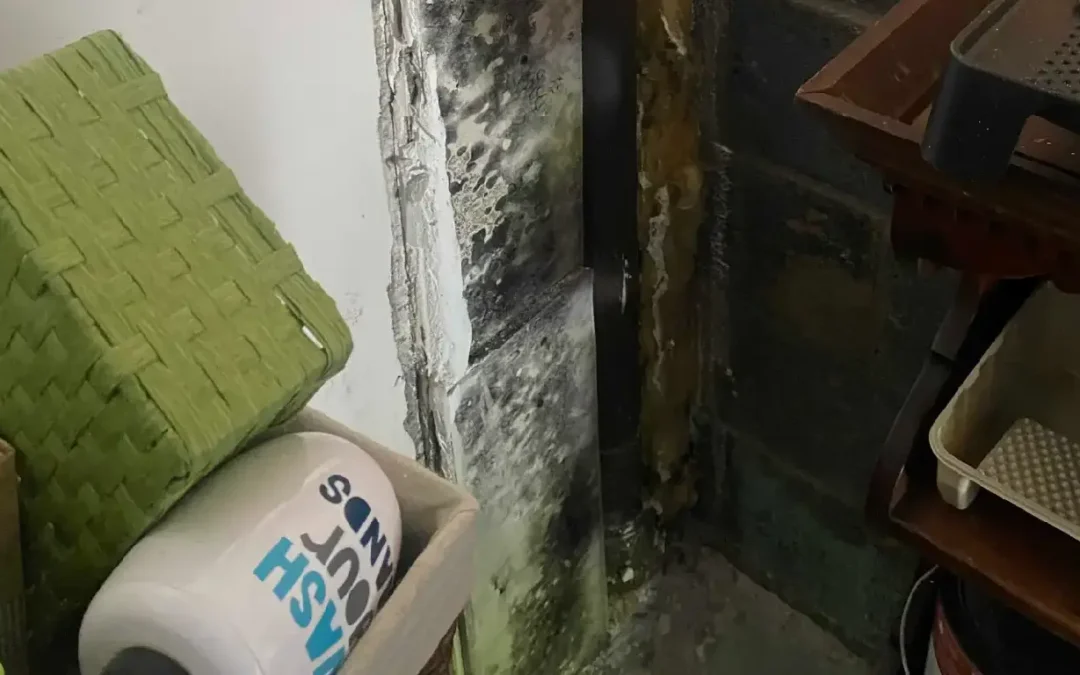In this article today, we will see what mildew is because it is one of the variants of mold. This mold makes its appearance in damp places on any surface in our family environment or in our workplace.
Mildew is scientifically known as oomycete, and there are more than 600 species that make up the great family of fungi, from which molds and all their derivations come.
We all know that spores are released from fungi, and mildew comes from one of these varieties of fungi that release their spores to spread in the environment.
Actually, it is one of the variants of mold, so it must be treated for its extermination.
We must always keep in mind the possibility of seeking professional help, in severe cases that offer a lot of resistance to home procedures.
This strain of molds mainly attacks the leaves of plants, however, it can be found on any type of surface and in any environment.
The GS Mold Solution Company is always on the lookout to support its customers in the event of any problem. Above all, in everything that is related to the extermination of all types of fungi and molds in your home or business.
How to avoid the appearance of mildew?
If we want to know how to avoid the appearance of mildew around us, we must take strong measures. We all know the serious negative consequences that come from these.
In addition, we must clarify that this variety of mold is almost exclusive to the bushes.
We are now going to see some of the measures that we must take to avoid their presence on our property:
- We must avoid the presence of mold, correcting the water bottles due to broken pipes or leaks, as well as leaks from damaged taps.
- Avoid accumulating wet clothing in the dirty clothes basket.
- Keep all the spaces in the house well ventilated, allowing air to enter through doors and windows.
- Try to let in sunlight during the day, whenever possible.
- Leaks from the roof must be corrected, since a certain degree of humidity can also appear on the walls and furniture and with this, the appearance of fungi and mildew.
If this variety of mold makes its appearance on the leaves of the bushes, we must treat it with antifungal agricultural products and special fungicides for plants.
From GS Mold Solution, we are specialists in the treatment of fungi and all the existing variety of molds, we can support you with all the necessary guidance to provide you with quick and effective solutions.
It is convenient to maintain a certain separation between plant and plant to avoid the propagation of the scourge, from one to another and to treat them separately from each one.
The diseased plant must be kept well pruned until healthy leaves appear, removing damaged leaves or cleaning them of that whitish mold.
The plants should not be watered daily, since constant humidity favors the proliferation of mildew.
How to remove Mildew in your environment?
When there is a presence of mildew in your field, or simply in one of your garden pots, you should immediately proceed to combat it in the most effective and domestic way.
If you see that the results are not satisfactory, then we recommend you request professional help, from a company made up of professionals.’

Home treatments to combat mildew
Prepare a solution of 2 parts of skimmed milk mixed with 8 parts of water, stir very well together with 2 or three grams of baking soda per liter, and spray the leaves with a sprinkler for two or three continuous days.
If you can’t completely exterminate the mold, you can try a cloth soaked in paraffin. Carefully clean each leaf separately, you can repeat this treatment once a week, up to three weeks in a row.
Chemical treatments to combat mildew
The Sanosil S100, read the instructions very well or, failing that, look for another fungicide that your trusted distributor recommends and that has the same antifungal and fungicidal properties.
Look for medicines based on Dimethomorph or Fosetil, which directly attack the strain, preventing it from reproducing again.
Where does mildew come from?
This strain of mold, like all those that make up this great family derived from fungi, is spread by its spores, it is found more frequently in humid places and with little ventilation, that is, where neither enough light nor enough air.
Bathroom shower tiles, as well as floor tiles, cabinet joints, and those hard-to-clean crevices are prone to mold undermining.
The mold, coming from a fungus, can originate in the same air, it is in the environment where there is humidity and it is expanded by its own spores at a considerable distance from the mother source.
How many kind of mold are known?
There are several types of mold that can affect your property and also your health. Next, we will mention the most common:
- Pink Mold
- White Mold
- Mold Mildew
- Penicillium mold
- Black Mold
- Aspergillus mold
- Cladosporium mold
- Alternaria mold
These, plus some other derivations, can rise in different classifications and sub-classifications up to about 600 species and derivatives with different nomenclatures.
Consequences of living in the presence of mildew
When people live with these molds in their habitat, either inside or outside their home, they can suffer adverse consequences.
Some respiratory diseases and conditions, sore throat, eye irritation, skin irritation, allergies with continuous sneezing and other discomforts may occur.
Mildew can cause burning, itching and hives due to the presence of dermatophytes (fungi), from the environment where you are.
In addition, you can lose fine clothing and perceive damage, sometimes irreversible, on surfaces such as upholstery, walls, wallpaper, floors and others, such as furniture made of wood.
There may also be hives on the skin and other endless ailments and discomforts, which must be attacked quickly. Mildew must be prevented from settling inside our bodies.
When the mold is in the shoes, it can cause a bad smell in the feet and can even reach the scalp, eyelashes, eyebrows and the whole body in general where there is frequent humidity, due to perspiration.


0 Comments